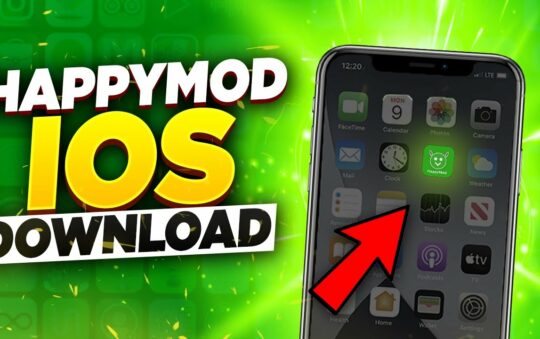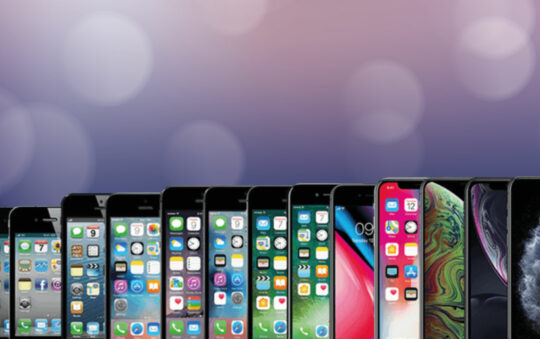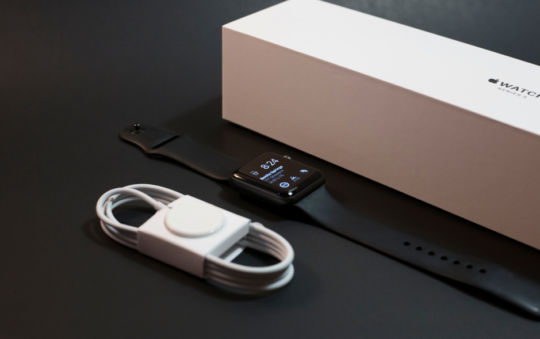Do you remember a time when you didn’t have a cell phone?
Although we are all accustomed to having smartphones in our life, there was a time, not so long ago, where we just didn’t have such convenient lines of communication.
In this guide, we go right back to the very beginning and glance at cell phones through the years, to see how we got to the modern day smartphones such as the iPhones and the Samsung Galaxies.
Come with us as we explore the development of the mobile phone and travel through the history of this life changing device!
When did cell phones become popular?
Cell phones began to gain popularity in the 1990s, although their history dates back to the earlier decades. The first true mobile phone call was made in 1973 by Martin Cooper, a Motorola researcher and executive, but it took about a decade for cell phones to become commercially available.
1973 – The Very First Cell Phone
Motorola developed the first portable cell phone in 1973. The hand-held device was shaped like a brick and weighed around 2.4 pounds. It was called the DynaTAC 8000X and is considered as the original cell phone.
The device only operated for a maximum of 30 minutes talk time, and that was with a huge 10 hours of charging!
The very first call that was made was by Martin Cooper, who was an executive at Motorola. He called Dr. Joel Engel, an engineer at their rival business, Bell Labs.

The very first mobile device wasn’t cheap. The cost of the DynaTAC phone was $3,995, which is equivalent to $10,000 in today’s money.
In fact, if you wanted to buy the DynaTAC 8000X today, you will need a lot more than $10k!!
Check out this eBay listing!! £44,888 will get you a mint condition Motorola DynaTAC 8000X.

1983 – Motorola DynaTAC
It took Motorola another 10 years before they brought out the commercially available DynaTAC 8000X. The DynaTAC was the first cell phone made for consumers and the first of many early mobile phones to come out in the 80s.
The DynaTAC, which was still large and expensive ($4,000), was still clunky and heavy. However, it wasn’t until 1989 that the Motorola MicroTac, a flip phone small enough to put in a shirt pocket, signalled the start of phones getting smaller.
The DynaTAC became synonymous with the 80s. It featured in so many TV series and movies of that era.

The phone’s most famous appearance was in Wall Street, used by Gordon Gecko (Michael Douglas), and was one of the earliest and undoubtedly the most well-known early cell phones.

It served primarily as a status symbol, more than a functioning cell phone.
1985 – Siemens Mobiltelefon C1

The Siemens Mobiltelefon C1, which resembled a briefcase, was the company’s first mobile phone. You will probably think this is strange, but people used cell phones that looked like briefcases, as it was the only way to have enough charge when you were out and about town. From this, phones then became more compact in the wake of this model.
1987 – Mobira Cityman 900 – The Very First Nokia
The Mobira Cityman 900, Nokia’s first mobile phone, was introduced in 1987. The phone was seen as pricey and only available to those of a higher status and weighed just 800g (28 oz) when the battery was included. The phone measured 183 × 43 × 79 mm.
The Cityman’s movie claim to fame came in the 1987 movie Lethal Weapon, which includes multiple sequences where the Cityman 900 is prominently used.
In Finland, the phone was known as “Gorba.”

This was due to the fact that Mikhail Gorbachev, General Secretary of the Communist Party of the Soviet Union, called Moscow during a news conference from the Hotel Kalastajantorppa in October 1989 using a Cityman 900 that had been given to him.
1987 – GSM
In 1987, the common standard agreed upon was called GSM. It got this name from the Groupe Spécial Mobile who came up with it, but eventually changed to Global System for Mobile Communications.
The early cellular networks used analogue signals, but the GSM system transmitted digitally -making it a ‘second generation,’ or 2G, system.
The new phones would use one radio frequency band, 900 MHz, throughout Europe instead of multiple bands. This would allow users to have a signal no matter where they were. The phone design also included features like SMS (texting) and increased security measures.
Other nations swiftly followed suit, opting to adopt the GSM standard, which was an enormous leap forward compared to what was available in the United States.
1988 – Samsung Releases Their First Phone

Samsung created the SH-100, its first “handphone,” a year later, in 1988. It was the first officially made and designed mobile phone in Korea.
Its display was so small that text messages were impossible to see. Only the dialled or incoming number was able to be seen.
The electronic image on the display was always black back then because all cell phone displays were monochromatic.
The SH-100 was characteristic of the Motorola period, when mobile phones were just starting to become commonplace but were still considered luxury goods.
1989 – The Start Of The Flip Phone Era – Motorola MicroTAC
After many years of the brick phone, Motorola innovated once more by introducing the “flip” design to the market. The name of this model was the “Motorola MicroTAC” and was the smallest and lightest phone available at the time.
For a number of years, Motorola produced several comparable brick-style cell phones. Prior to Motorola’s MicroTAC model, the majority of cell phones were large and frequently mounted in vehicles or carried around like briefcases.

The MicroTAC pioneered a revolutionary “flip” design in which the “mouthpiece” flipped over the keypad. However, in later production, the “mouthpiece” and ringer were actually housed in the phone’s base. This established the bar and served as the prototype for contemporary flip phones.
1992 – The first mass-produced GSM (2G) phone

By 1992, the antennas and phone bodies had both shrunk from the days of the brick phones. The next significant development was the Nokia 1011, the first GSM (2G) phone to be mass-produced, which was introduced in 1992.
Contrary to popular belief, the Nokia 1011 was not the first GSM phone. A year earlier, the British-made Orbitel TPU 900 was introduced.

1992 – The Year of The First Text Message

The first text message was also sent that year. The corporate director received it from developer, Neil Papworth, at Vodafone’s holiday office party. Neil was asked to develop a messaging system.
Simply put, the SMS message said, “Merry Christmas!”
1994 – Smartphones Arrive
Many more years earlier than most people realise saw the debut of the first smartphone. The IBM Simon, which was introduced in 1994, is regarded as the first smartphone in history because it was the first gadget to include apps and a touchscreen.
Although this first smartphone failed to catch on, “normal” cell phones continued to become more and more popular while being smaller and more diverse in their designs. After the introduction of slider phones and other flip phones, Motorola innovated once again.
1996 – Vibrating Phones

The Motorola StarTAC was the first vibrating phone as well as the first clamshell phone.
It was hailed as a marvel of ingenuity and was widely regarded as the first flip cell phone. Motorola was praised for once again being ahead of the curve.
In 2005, StarTAC was listed by PC World as one of the top 50 devices of the previous 50 years.
1996 – First Phone With A Keyboard

The Nokia Communicator 9000, which was first made available in 1996, included a QWERTY keyboard. It was Nokia’s first smartphone. The Communicator 9000 provided a number of business-related functions in addition to a keyboard, including email, web browsing, faxing, word processing, and spreadsheets.
And it accomplished this long before Blackberry came to represent the mobile professional.

1997 – First Phone With No External Antenna

The Hagenuk GlobalHandy was the first phone to arrive without a discernible external antenna.
It was a stylish, ergonomically designed German phone that created history by becoming the first to do away with an external aerial.
The GlobalHandy is undoubtedly a comfortable phone in the hand, and its practical design is typical of other German goods. The keyboard’s simplicity did have one glaring flaw, though. There are only numbers; no letters. This required messaging via an awkward menu system, which was difficult to use.
Can the GlobalHandy still be used today? Yes it still can function as a working phone.
Today’s value: $35 – $50
1998 – Launch of Nokia 5110
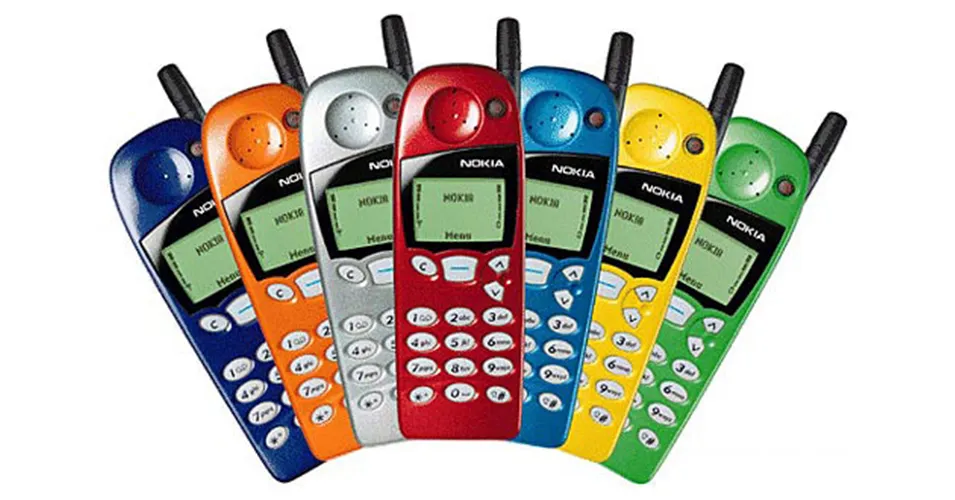
In 1999, it sponsored London Fashion Week, which was an immediate success and helped establish the trend for customising your phone.
The Nokia 5110 launched the early 2000s demand for mobile phones with interchangeable cases. People wanted the ability to change the color of their phones, without the need to buy a completely new device.
The Nokia 5110 became a popular accessory. It gradually lost its edge, as it was a mid-range phone rather than a luxury device.
The original Nokia covers were metallic and included seven colour ranges: ‘Antiqua Red, ‘Bermuda Blue’, ‘Island Yellow’, ‘Geeko Green’, ‘Shark Silver’ and ‘Tango Orange’.
1998 – Color Comes To Mobile Phone Screens

The first cell phone with a colour screen, the Siemens S10, was introduced in 1998 and was a game-changer. It could show up to six lines of text, however the number of lines that could be shown may be reduced if the font size was increased to make the text easier to read.
1998 – 3G Network Launches
The third-generation mobile network’s introduction was another significant occasion that year. It’s important to note that the same year that personalised ringtones were introduced, they also became the first downloadable material for mobile devices.
1999 – Launch of First tri-band GSM phone
With the introduction of the Motorola Timeport, the first phone with global compatibility, Motorola accomplished yet another advancement.
1999 – Launch of WAP browser cell phone
Not only Motorola, but Nokia also introduced a product with a ground-breaking function this year. The first cell phone with a WAP browser that allowed users to browse the internet was the Nokia 7110.
1999 – Launch of First phone + MP3 player
In 1999, Samsung released the Samsung SPH-M100 Uproar, a revolutionary phone of their own, not happy to let Motorola and Nokia have all the limelight. It gave the user the option of playing music by fusing the characteristics of a cell phone with an MP3 player. Even a dedicated play/pause button was strategically situated on the phone.
1999 – Launch first cell phone to feature a splash-proof case
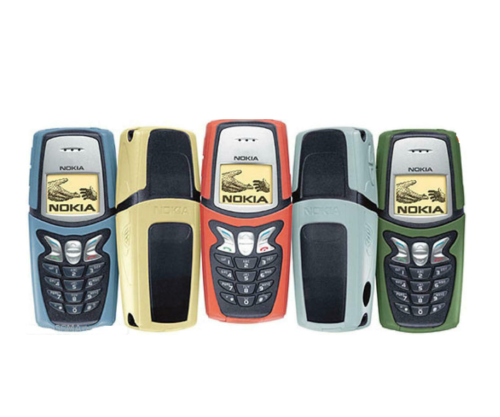
The Nokia 5210 was one of the more popular models at the time and was the first cell phone to have a splash-proof cover.
1999 – First phone ever to feature GPS capabilities
The Benefon Esc! was the first phone to ever have GPS capabilities when it was released in the same year.
1999 – First camera phone

There is some disagreement over who invented the first camera phone. Although some claim it was the Sharp J-SH04, it was actually the Kyocera VP-210 VisualPhone, a Japanese phone that had debuted a year earlier. It has a front-facing camera but just 20 photographs’ worth of memory.
In the years that followed, other producers started to roll out their own camera phones, which increased in storage capacity and megapixel count.
2000 – A Legend Was Born

The size and weight of phones has increased at the turn of the millennium. Launched in 2000, the Nokia 3310 not only become one of the most recognisable phones ever, but it is still among the top-selling smartphones today.
2001 – The first phone having features for IR, radio, and calendar
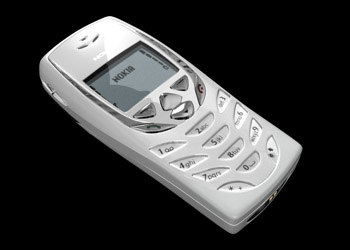
The Nokia 8310 was the first phone with all of these features, but it wasn’t inexpensive. The cell phone originally cost $500 when it was launched in 2001. It was manufactured by Nokia between 2001 and 2002.
It had high-end capabilities like infrared and a fully functional calendar that were unusual for phones at the time, and it was the first Nokia phone to offer GPRS and an FM radio.
2001 – Cell phone with Bluetooth
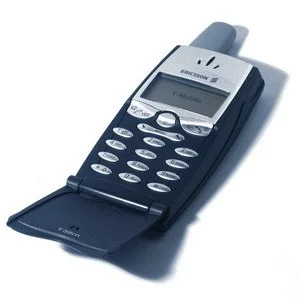
The Ericsson T39 was the first Bluetooth cell phone, and other manufacturers soon followed suit in releasing this innovation. It was the follow-up to the T28 and T29.
It came in three colors; Classic Blue (dark blue – photographed above), Icecap Blue (light blue) and Rose White (cream). The T39 was the final Ericsson phone to feature an active flip and an external antenna.
2001 – Symbian OS cell phones arrive
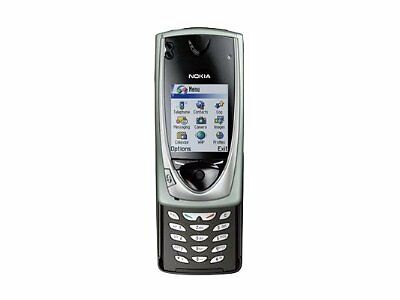
The Nokia 7650 was both the first Nokia phone with an integrated camera and the first mass-market Symbian OS phone.
It was just what the industry needed. Basic phones were as cheap as they were going to get and with nearly everyone who wanted one having one. Manufacturers and network providers needed a reason for people to go out and buy another mobile phone. Many hoped the Nokia 7650 would be the reason.
The 7650 was actually a smartphone as well. The UI, which provided messaging, WAP internet access, image management, a calendar, to-do lists, and a coloured version of the well-known Nokia Snake game, was powered by the Symbian OS v6.1.
2002 – Phones With Photo Display Function

2002 was the year that technology arrived in the form of the Sanyo SCP-5300, a phone that allowed users to view images directly on the screen without connecting the device to a computer. Additionally, this ground-breaking phone had a camera with flash and two colour screens.
Again, with Nokia and Motorola dominating marketplaces all over the world, phones kept getting smaller and more powerful.
When Nokia unveiled the 7610, their first smartphone with a 1-megapixel camera, the camera game also advanced. They also unveiled the Nokia 6630, the first genuine worldwide roaming phone.
2002 – The First Blackberry Smartphone was Released – BlackBerry 5810
In 2002, the first BlackBerry phones were released. The new “smartphones,” which provide cellular phone service, wireless e-mail functionality, and Internet access, completely revolutionised business communication. BlackBerry-compatible phones rapidly became available from cellular phone companies.

One of the first Java-based devices with a built-in mobile phone, but a headset was needed, was the Blackberry 5810. It debuted in 2002 and was designed more for corporations and businesses than for consumers.
The 5810 sported a monochrome 160 by 160 pixel display and operated on a 2G network. The 5000 series also included the 5790 and 5820.
2002 – Sidekick was released in 2002
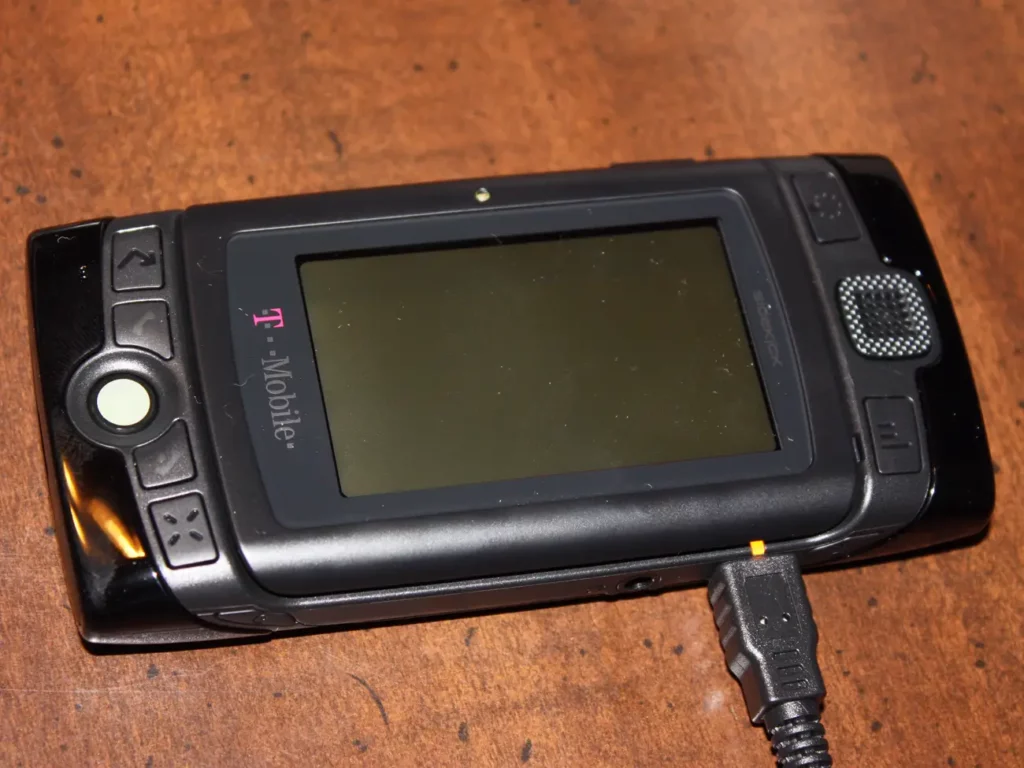
The Hiptop was rebranded as the Sidekick by T-Mobile. The Sidekick was like a little computer that individuals could carry around in their pockets, with a full keyboard that slid out from behind the screen.
During a presentation at Stanford in 2004, Joe Britt stated, “It was supposed to be an extraordinarily low-cost item that you could use to carry information with you.” He was a founding member of Danger, the team behind the Sidekick.
2005 – Fully Waterproof Phone

In 2005, the first water-resistant phone appeared. It was the Casio G’zOne, capable of withstanding submersion up to one metre deep.
The Casio G’zOne phones came in three colours and included a digital camera, 2.2-inch QVGA screen, 1.0-inch round screen on the outside, lighted clock, stopwatch, and electronic compass.
2007 – Another Legend is Born – iPhone 1
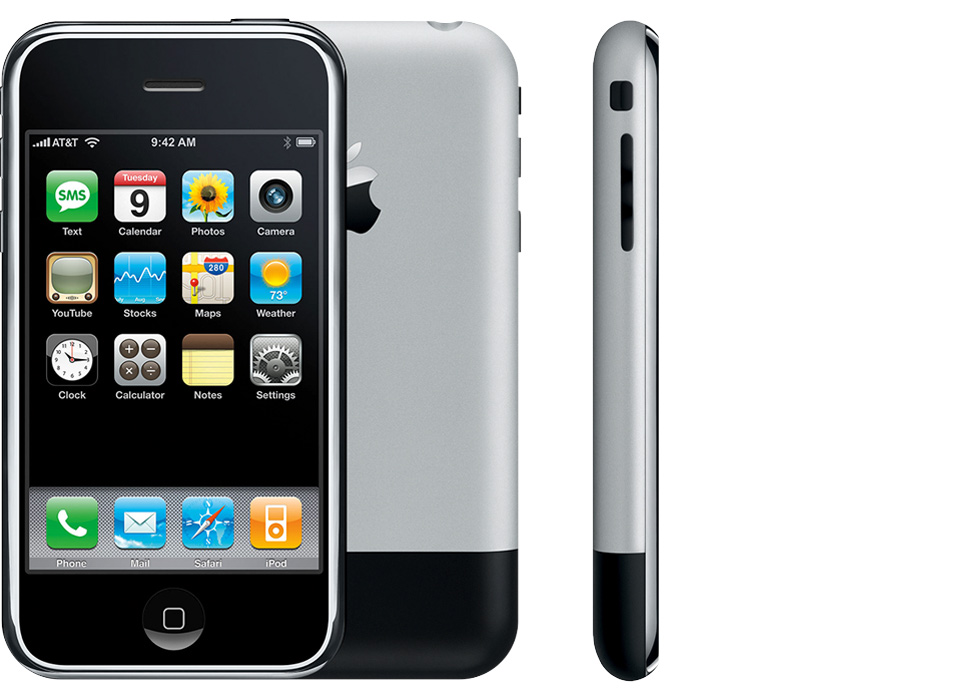
In 2007, one of the most significant occasions in cell phone history happened. Due to the removal of the majority of physical hardware buttons in favour of a touch-based interface, the first iPhone, also known as the iPhone 2G, was released and completely surprised everyone.
Although the iPhone was groundbreaking at the time, the BlackBerry outperformed it and continued to be popular. Everyone was enamoured with the Blackberry thanks to BBM instant messaging, including teenagers, businesspeople, and rappers.
2008 – The Android Phone Arrives

The HTC Dream was the first Android phone with the Linux-based Android operating system, to be commercially released. Although the Android operating system was critiqued for its lack of functionality and connection with third-party apps, it was nevertheless hailed as revolutionary for its notifications system and Google service integration.
The HTC Dream was also known as the T-Mobile G1 in the US and Europe. In Poland it was known as Era G1.
2009 – 4G
In 2009, Norway and Sweden were the first countries to commercially implement the Long Term Evolution (LTE) technology, which has now spread to most of the world.
2009 – Samsung Galaxy – The First Galaxy Phone

The first in what would become the long-running Galaxy series, the Samsung Galaxy phone, the GT-I7500, was introduced by Samsung the same year.
2009 – First Phone with Google Maps
The Motorola Droid, which was released in the same year, was the first phone with the free Google Maps Navigator pre-installed. Although the 2009 model was not the first Android phone, it was probably the first significant one.
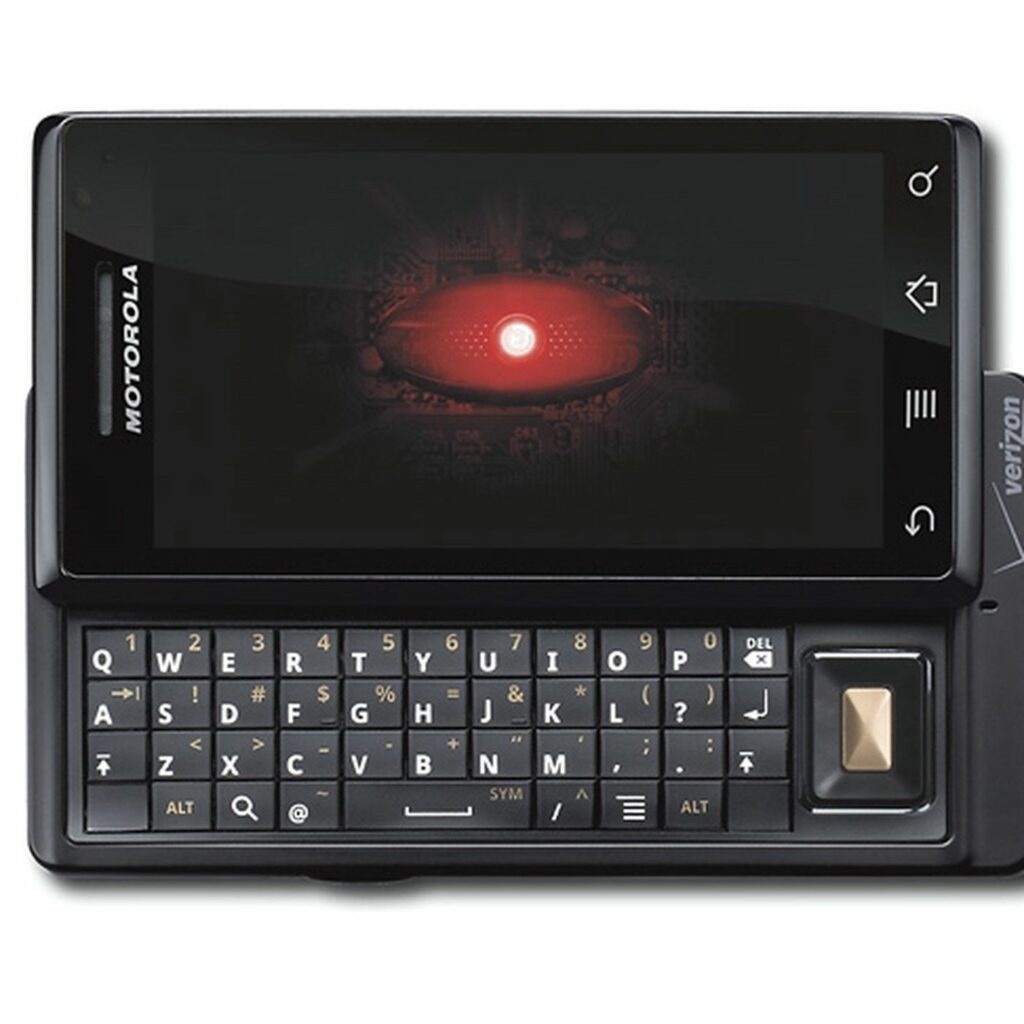
Additional innovation occurred in the ensuing years. In addition to the Retina display and FaceTime, Apple released the iPhone 4. Additionally, it was the first iPhone with a front-facing camera.
2010 – First Samsung phone without front navigation buttons

The Samsung Galaxy S, the company’s new flagship, was introduced in 2010. It boasted the quickest graphical processing at the time and was the thinnest smartphone at 9.9mm.
2010 – First LTE (4G) smartphone
The Samsung SCH-R900, the first 4G smartphone, was also released by Samsung in the same year.
In 2010, several further innovative features hit the market. The Nexus S, the first Android smartphone with NFC, the Moto Defy, the first water-resistant Android smartphone, and Samsung’s 8-megapixel Galaxy II were all introduced.
With a thickness of just 7.1 mm, Motorola’s Razr was the thinnest phone available at the time, and Apple’s iPhone 4S was the first smartphone to include Siri, the first personal digital speech assistant.

The Sony Ericsson Xperia Play, a phone that resembles a gaming console and is targeted at the mobile gaming sector, was developed by Sony Ericsson.
The Motorola Atrix, the first phone with a fingerprint sensor, was produced by Motorola as part of its focus on enhancing security features.
2011 – Xiaomi smartphone

The Xiaomi Mi 1 was the company’s first phone, released in 2011, and it was solely sold in Asian markets.
It was originally priced at ¥1999, with over 300,000 pre-orders in the first 34 hours.
2012 – Galaxy S3
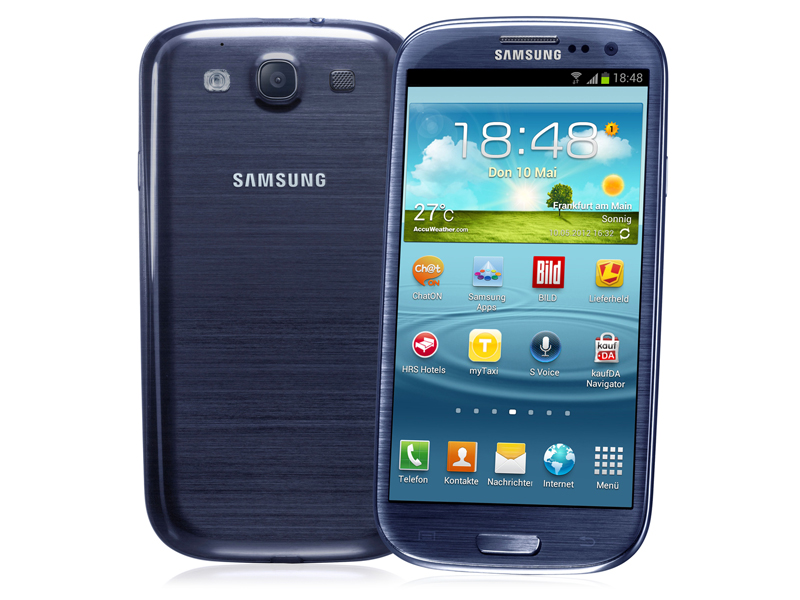
A year later, Samsung released the Galaxy S3, a smartphone with its own personal voice assistant and cutting-edge capabilities like eye-tracking.
The groundbreaking Nokia Lumia 920 (which utilised the now-forgotten Windows Phone OS) was introduced at around the same time.

This phone was the first to include optical picture stabilisation, wireless inductive charging, and a highly sensitive capacitive screen (OIS).
2013 – iPhone 5s

In 2013, LG introduced the G2, Sony introduced the Xperia Z, and Apple released the iPhone 5S (their first phone with a fingerprint sensor).
2014

The OnePlus One was introduced in 2014, and then the South Korean goliaths Samsung and LG introduced some new technology. Samsung unveiled the Galaxy S5, the first smartphone with a heart rate monitor, while LG unveiled the G3, the first flagship with a QHD screen.
2015 – Curved Display
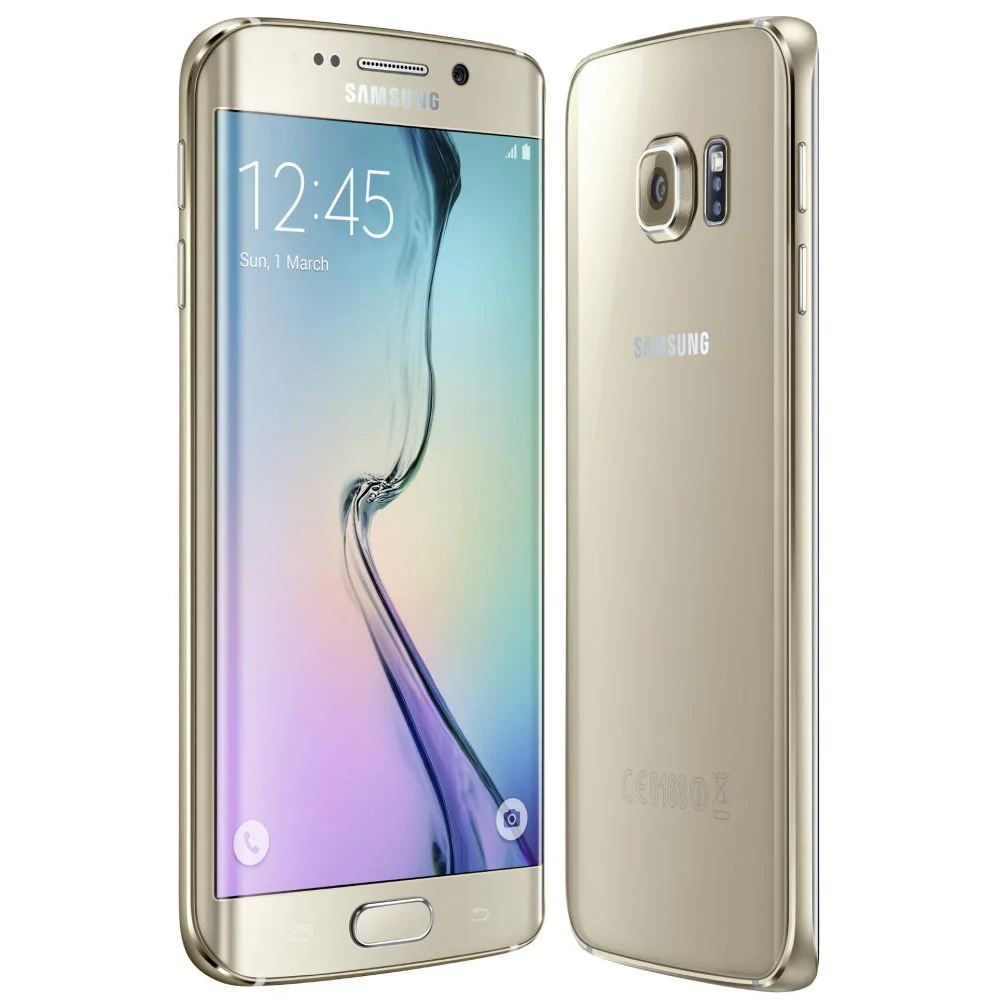
The Samsung Galaxy S6 Edge, the first smartphone with curved display edges that enabled additional functionality, was released in 2015, a year later.
The Nexus 5X and Nexus 6P were among the Nexus phones that Google released, and the Google Pixel was the company’s first entirely original phone. It was praised for having the best camera in its class and offered limitless cloud storage as an added benefit.
Best selling cell phone in 2015: Samsung Galaxy J7
2016 – First Smartphone with HDR Display

Sony introduced the Xperia XZ, the first smartphone with an HDR display, in 2016, and Motorola introduced the Moto Z, a smartphone with magnetic accessories that provide further functionality.
The same year, Apple released the iPhone 7 Plus, the first iPhone that was fully waterproof and had a dual-lens system but no headphone port.
Best selling cell phone in 2016: Samsung Galaxy S7
2017 – Face ID

The LG G6 smartphone with Dolby Vision was released in 2017, and Asus Zenfone AR set the standard for smartphones with 8GB of RAM.
A reproduction of the legendary Nokia 3310, which kept the same design aesthetic as the original but included contemporary capabilities like a camera and Bluetooth, likewise caught everyone off guard.
The Galaxy Note 8 was released by Samsung as a “safe bet,” the Pixel 2 was introduced by Google, the V30 was released by LG, and the iPhone 8 was the first iPhone to support wireless charging.
The higher-end iPhone X, a smartphone that replaced the fingerprint sensor (Touch ID) with face unlock technology, may have been more significant to Apple enthusiasts (Face ID).
Axon M, a dual-screen smartphone introduced by ZTE, was unquestionably ahead of its time. Even more groundbreaking at the time was the ability to use many apps simultaneously.
Best selling cell phone in 2017: Xiaomi Redmi Note 4
2018 – First Cell Phone to Feature 3 Cameras
The Huawei P20 Pro, which had a 40 MP primary camera, a 20 MP secondary camera, and an 8 MP front camera, was the first smartphone to feature three cameras.

The Honor 10 and OnePlus 6 were also announced as flagship devices this year, but the Vivo X20 Plus UD—the first smartphone to use an in-screen fingerprint sensor—may have been the most avant-garde.
The Red Hydrogen One, which could produce “holographic” videos and images but ultimately failed, deserves a mention as well.
The Hubble Phone, a cell phone designed by Turing Space Industries and modelled after the Hubble Space Telescope, was introduced that same year.
Best selling cell phone in 2018: iPhone X
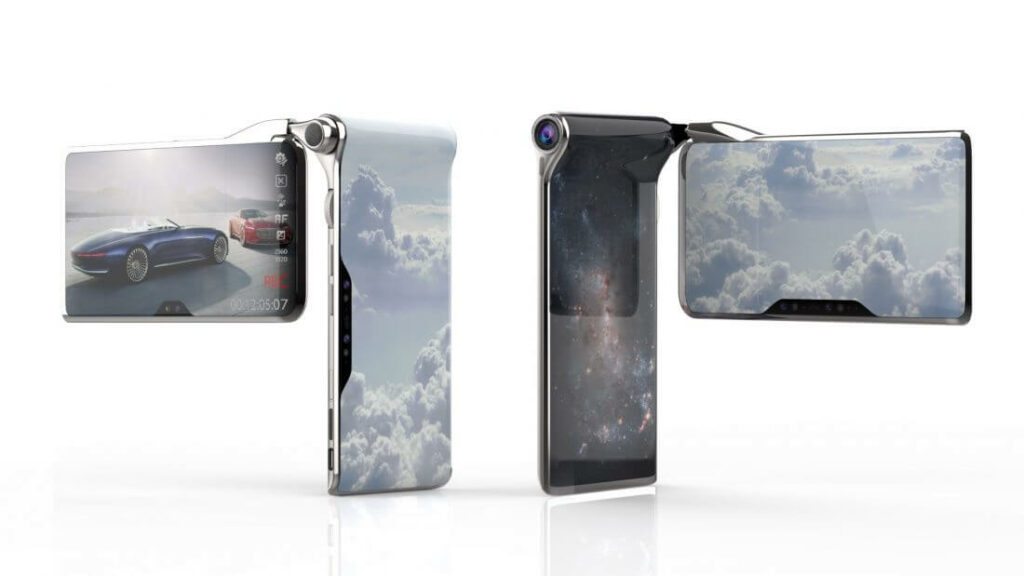
The phone has a built-in 15x optical zoom camera, among other capabilities.
2018 – First Foldable Smartphone

The Royole Flexpai, the first commercially accessible foldable smartphone with an OLED display, was released in November 2018 by the Chinese startup Royole. It had a single 7.8-inch display that could be folded outward and was visible when open.
2018 – Largest Battery in a Mobile Phone

The Power 5 from Chinese company Ulefone features the largest battery ever seen in a mobile phone (13,000 mAh), which is more than four times bigger than Apple’s flagship, the iPhone XS Max, which was released in the same year.
2019 – Launch of the 5G network
The first 5G phones and the fifth-generation network both debuted in 2019.
The Galaxy S10, iPhone XR, Huawei P30 Pro, OnePlus 7 Pro, Samsung Galaxy Fold, and Huawei Mate X were also introduced in 2019 along with the Xiaomi Mi Note 10, which was the first smartphone to have a 108 MP camera.
Best selling cell phone in 2019: iPhone XR
2020

Although folding display phones are still in their infancy, it appears that manufacturers are committed to making them widely available.
Second-generation folding phones were released by companies like Samsung, Motorola, and Huawei. The Samsung Galaxy Flip Z 5G, is one of the most notable folding display phones on the market in 2020.
Best selling cell phone in 2020: Samsung Galaxy A51
2020 – First Phone to Feature 5 Cameras – Nokia 9 PureView

The cameras on modern smartphones are getting more and more advanced as time goes on. The Nokia 9 PureView pushed the boundaries in camera technology by producing a cell phone that has 5 built in cameras.
At the back of the Nokia 9 PureView, was five 12MP sensors. Three of these sensors are monochrome for better black-and-white photography, but only two of them are full-color.
It had a new technology called Light’s Lux Capacitor camera control chip. This enabled the device to run all the five cameras at the same time smoothly.
2021
2021 was a year of production bottlenecks, shipment holdups, and chip shortages. However, despite all of this, manufacturers were still able to release a variety of new phones in 2021.
The most notable models was the Apple iPhone 13, 13 Pro and the Samsung Galaxy S21.
Apple’s A15 Bionic chip, an IP68 water resistant rating, a Super Retina XDR screen with ProMotion and Ceramic Shield, ultra-wideband for using things like digital keys, Bluetooth 5, WiFi 6, and gigabit LTE were all packed in to the iPhone 13 Pro. This model is one of the largest iPhone models ever.
The 6.8-inch Quad HD+ Dynamic AMOLED 2X Infinity-O display on the Galaxy S21 Ultra 5G featured a resolution of 3200 x 1400 pixels and a pixel density of 515ppi (pixels per inch).
Four rear cameras (10-megapixel telephoto F2.4 and F4.9 units, 108-megapixel wide-angle, and 12-megapixel ultra-wide), HDR10+ certification, a 120Hz refresh rate, a 40-megapixel “hole-punch” front camera, and a pressure-sensitive S Pen are notable features.
Best selling cell phone in 2021: iPhone 12
2022
The phone that made the biggest impact on 2022 was the Samsung Galaxy S22 Ultra 5G.
The Samsung Galaxy S22 Ultra 5G is a high-end smartphone that was released in early 2022 as part of Samsung’s flagship S series. Known for its advanced features, the S22 Ultra 5G boasts a dynamic 6.8-inch AMOLED 2X display with a 120Hz refresh rate, offering vivid colors and smooth motion. It’s powered by the Snapdragon 8 Gen 1 or Exynos 2200 chipset (depending on the region), paired with up to 12GB of RAM, ensuring fast and efficient performance.
One of the phone’s standout features is its versatile camera system, which includes a 108MP main sensor, 12MP ultra-wide lens, and two telephoto lenses for enhanced zoom capabilities. This setup allows for stunning photography and videography in various lighting conditions. The phone also features a robust 5000mAh battery, supporting both fast wired and wireless charging, and offers S Pen compatibility, integrating the features of the Note series. Its design is sleek and durable, with a Gorilla Glass Victus front and back, and an Armor Aluminum frame.
The S22 Ultra 5G runs on Android 12 with Samsung’s One UI, offering a user-friendly and customizable experience. It’s a top choice for those seeking a combination of powerful performance, advanced camera capabilities, and premium design in a smartphone.
Other notable phone releases in 2022 include iPhone 14, Google Pixel 6 and Oneplus 10 Pro
Best selling phone of 2022: Apple iPhone 13
2023
In 2023, the smartphone market saw the release of several notable phones, each standing out for its unique features and advancements in technology. Here’s a brief overview of some of the most prominent models:
- Apple iPhone 15 Pro Max: Continuing Apple’s tradition of innovation, the iPhone 15 Pro Max pushed the boundaries with its A17 Bionic chip, offering remarkable speed and efficiency. The phone featured a groundbreaking camera system with enhanced low-light performance and introduced new AR capabilities. Its design remained sleek, with improvements in battery life and display technology.
- Samsung Galaxy S23 Ultra: Building on the success of its predecessors, the Galaxy S23 Ultra came with an improved Exynos or Snapdragon chipset, depending on the region. It boasted a more refined camera system with higher resolution sensors and advanced AI features for photography. The device also featured a robust battery life and continued support for the S Pen, making it a favorite among productivity-focused users.
- Google Pixel 8 Pro: Google’s Pixel 8 Pro made headlines with its advanced machine learning and AI capabilities. The phone’s camera, powered by Google’s computational photography, set new standards for mobile photography. It also featured an improved Google Assistant, a high-refresh-rate OLED display, and a sleek, environmentally friendly design.
- OnePlus 11 Pro: The OnePlus 11 Pro focused on delivering high performance with its latest Snapdragon chipset and fast charging capabilities. It featured a high-quality display with a 120Hz refresh rate and an improved camera system developed in collaboration with Hasselblad, offering exceptional color accuracy and image quality.
- Xiaomi Mi 12: Xiaomi’s Mi 12 was notable for its balance of performance and price. It packed a powerful chipset, an impressive AMOLED display, and a versatile camera setup. The phone also boasted a sleek design and fast charging, making it a strong competitor in the high-end smartphone market.
- Sony Xperia 1 V: Targeting photography and video enthusiasts, the Xperia 1 V continued Sony’s focus on high-quality imaging with a camera system developed in collaboration with its Alpha camera team. The phone also featured a stunning 4K HDR OLED display, appealing to users who prioritize media consumption and content creation.
What could be coming to the smartphone market in 2024…
Predicting the trajectory of smartphone technology for 2024 involves considering current trends and emerging technologies. Here are some potential developments we might see in the coming 12 months…
- Advanced AI and Machine Learning: Smartphones in 2024 are expected to feature more sophisticated AI and machine learning capabilities. This could mean more personalized user experiences, improved battery management, and even smarter camera systems that can adapt to various shooting environments and subjects.
- 5G and Beyond: As 5G networks become more widespread, smartphones in 2024 will likely offer enhanced 5G capabilities, potentially even beginning to lay the groundwork for 6G technology. This would enable faster data speeds, lower latency, and more reliable connections, facilitating everything from high-quality streaming to advanced augmented reality (AR) experiences.
- Augmented Reality (AR) Integration: AR technology is expected to become more integrated into smartphones, with enhanced AR applications for gaming, navigation, and virtual try-ons. This integration could be further supported by improved sensors and cameras, as well as more powerful processors.
- Folding and Flexible Displays: The trend of foldable and flexible displays is likely to continue, with more refined designs and durable materials. This could lead to a wider adoption of foldable smartphones, offering larger screen real estate in compact forms.
- Sustainable and Eco-Friendly Designs: As environmental concerns become more pressing, smartphone manufacturers might focus more on sustainability. This could include the use of recycled materials, easily repairable designs, and longer-lasting devices to reduce electronic waste.
- Enhanced Battery Technology: Battery life remains a critical aspect of smartphones. In 2024, we might see new battery technologies that offer faster charging, higher capacity, and longer lifespan, possibly through advancements in solid-state battery technology.
- Improved Camera Systems: Camera technology will continue to be a major focus, with potential advancements including higher resolution sensors, better low-light performance, and more sophisticated computational photography techniques.
- Health and Wellness Features: Smartphones could incorporate more health-related features, such as advanced sensors for monitoring vital signs or detecting health conditions, integrating wellness more deeply into the user experience.
- Enhanced Privacy and Security: As cybersecurity threats evolve, smartphones in 2024 will likely offer more robust security features, including advanced biometric authentication and improved encryption methods, to protect user data.
- Edge Computing and IoT Integration: Enhanced processing capabilities might allow smartphones to play a bigger role in edge computing, interacting more seamlessly with the growing network of IoT devices.
More FAQs on The History of Cell Phone
When was the first cell phone made?
Answer: 1973
The first cell phone was created by Martin Cooper and his team at Motorola. The prototype, known as the Motorola DynaTAC 8000X, was the first handheld cellular phone. Cooper made the first publicized handheld cellular phone call on a prototype DynaTAC model on April 3, 1973. This groundbreaking event marked the beginning of the era of mobile telecommunications.
What year did cell phones come out?
Answer: 1983
The Motorola DynaTAC 8000X, which was introduced to the market in 1983. This release marked the beginning of the mobile phone era, making cell phones accessible to consumers, although initially, they were quite expensive and primarily used by business professionals. The introduction of the DynaTAC 8000X was a significant milestone in the history of telecommunications, leading to the widespread adoption and evolution of mobile phones over the subsequent decades.


